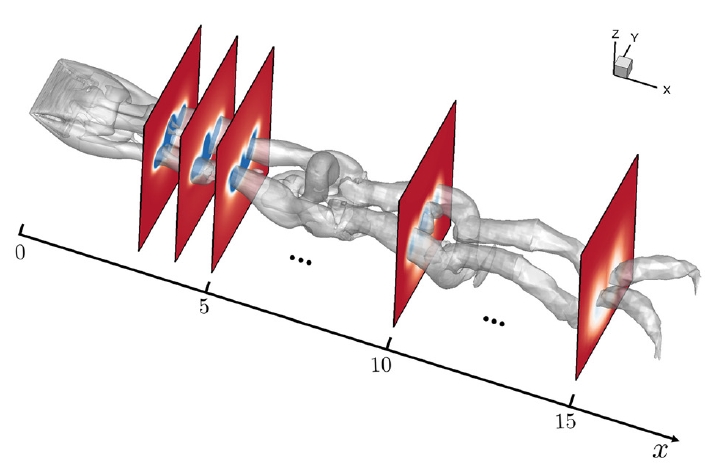Predictive model of the turbulent burning velocity 湍流燃烧速度预测模型
This is a model of the turbulent burning velocity sT over a wide range of conditions. The model consists of sub models of the stretch factor and the turbulent flame area. It predicts sT via an algebraic expression without free parameters. The model has been assessed using 490 cases of the direct numerical simulation or experiment reported from various research groups on planar and Bunsen flames over a wide range of conditions, covering fuels from hydrogen to n-dodecane, pressures from 1 to 30 atm, lean and rich mixtures, turbulence intensity ratios from 0.1 to 177.6, and turbulence length ratios from 0.5 to 66.7. Despite the scattering sT data in the literature, the comprehensive comparison shows that the proposed sT model has an overall good agreement over the wide range of conditions.
Source code: https://github.com/YYgroup/STmodel
References:
[1] Z. Lu and Y. Yang, Modeling of the turbulent burning velocity for planar and Bunsen flames over a wide range of conditions, Acta Mechanica Sinica, 38, 121504, 2022
[2] Z. Lu and Y. Yang, Modeling pressure effects on the turbulent burning velocity in fuel-lean hydrogen/air premixed combustion, Proceedings of the Combustion Institute, 38, 2901-2908, 2021
[3] J. You and Y. Yang, Modelling of the turbulent burning velocity based on Lagrangian statistics of propagating surfaces, Journal of Fluid Mechanics, 887, A11, 2020
Vortex-surface field 涡面场
The vortex-surface field (VSF) provides a systematic Lagrangian-based framework for the identification, characterization, and modeling of flow structures. As a general flow diagnostic tool, the numerical VSF solution can be constructed in arbitrary flow fields by solving a pseudo-transport equation driven by the frozen, instantaneous vorticity. From post-processing of large-scale database of numerical simulations, the VSF elucidates mechanisms in the flows with essential vortex dynamics, such as turbulence and transition.

Source code: https://github.com/YYgroup/vsfFOAM
References:
[1] Y. Yang, Theory and applications of the vortex-surface field, Chinese Science Bulletin, 65, 483-495, 2020 (In Chinese)
[2] S. Xiong and Y. Yang, Identifying the tangle of vortex tubes in homogeneous isotropic turbulence, Journal of Fluid Mechanics, 874, 952-978, 2019
[3] Y. Zhao, Y. Yang, and S. Chen, Vortex reconnection in the late transition in channel flow, Journal of Fluid Mechanics, 802, R4, 2016
[4] Y. Yang and D. I. Pullin, Evolution of vortex-surface fields in viscous Taylor-Green and Kida-Pelz flows, Journal of Fluid Mechanics, 685, 146-164, 2011
[5] Y. Yang and D. I. Pullin, On Lagrangian and vortex-surface fields in flows with Taylor-Green and Kida-Pelz initial conditions, Journal of Fluid Mechanics, 661, 446-481, 2010
Data-driven model for moving-boundary problems 动边界问题中的数据驱动模型
This data-driven model is based on the convolutional neural network (CNN) for force estimation in moving boundary problems by regarding the velocity field on a series of cross sections as images. It has three CNN architectures for integrating physical information or attention mechanism. The model performances indicate that the optimized CNN can identify important flow regions and learn empirical physical laws.

Source code: https://github.com/YYgroup/wakemodel
Reference:
[1] W. Tong, S. Wang, and Y. Yang, Estimating forces from cross-sectional data in the wake of flows past a plate using theoretical and data-driven models, Physics of Fluids, 34, 111905, 2022
